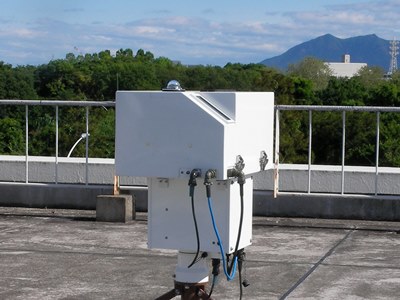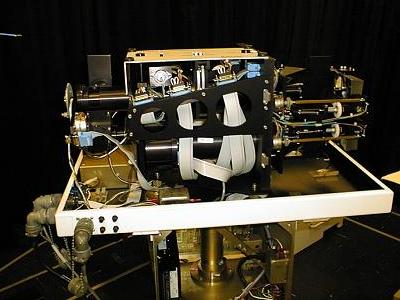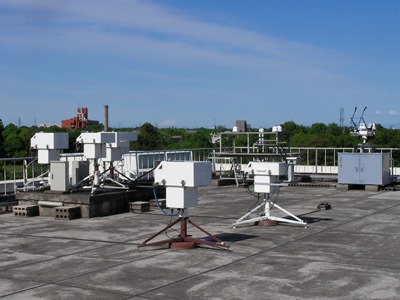Brewer Spectrophotometers
Instrument overview
The Brewer spectrophotometer was originally designed by Prof. Alan W. Brewer in 1973, and the current type was developed by Environment Canada and the University of Toronto. These instruments are used at more than 100 locations around the world for precise automated observation in all weather conditions.
Measurement principle
The Brewer spectrophotometer measures spectral UV irradiance by counting photons with a photomultiplier. At Tsukuba, spectral UV observation with a single-monochromator Brewer spectrophotometer (MKII) was started in 1990. The instruments were later updated to double-monochromator Brewer spectrophotometers (MKIII), which enable more precise observation.
The Brewer spectrophotometer measures spectral UV irradiance at 0.5 nm intervals in the wavelength range of 290.0 to 325.0 nm (maximum range: 286.5 to 363.0 nm). A specific wavelength is adjusted by implementing micrometer-scale changes in the angle of diffraction gratings with 3,600 lines per mm. An optical system directs light from the exit slit of the spectrometer to the photomultiplier.

Brewer MKIII spectrophotometer

Inside a Brewer MKIII spectrophotometer
Observation
The Brewer spectrophotometer can automatically track the sun and measure spectral UV irradiance. Observation is carried out every hour from sunrise to sunset, including twilight.
The total ozone is observed when the relative path of rays passing through the ozone layer (air mass) is 3.5 or less. Air mass is the depth of the ozone layer through which solar beam passes, defined as 1 on the vertical plane. And Umkehr observation is performed at solar zenith angles ranging from 60 to 90 degrees.
The number of daily observations varies with the time of year and the geographical location of the observation site.

Observation site